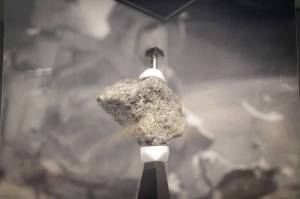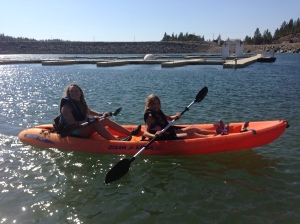Have you ever wondered how innovation first begins? Does it
actually have a starting point? I would offer the idea that it does. Innovation
begins when we mix experiences with other experiences. Like combining different
colors of paint, the moment the colors touch each other a new color is
introduced. So, the next obvious question is how do we mix different experiences
in order to create something new?
When I was working with one of my mentors a few years back
she introduced me to the idea of something called the third quarter phenomenon.
It’s the idea that when a group of people get together for a given period of
time their interactions become significantly visible during the third quarter.
Her research suggests that the greater the difference in experiences the
greater are the chances that the third quarter phenomenon will be more
significantly influenced. When we apply this theory to innovation we could
essentially improve our opportunity to increase innovative ideas.
For example, let’s imagine that we assemble two groups of
people (team Alpha and team Omega). We decide that team Alpha is going to be
comprised of people from similar backgrounds, education, and social
experiences. We then decide that team Omega will be comprised of people from completely
different backgrounds, different education, and different social experiences.
Just to make communication a little easier we agree that both teams speak English
as their common language. Let’s also agree that each team will be given the
same amount of time to complete a task that is similar in all aspects. As the
teams begin planning their strategy to complete the task team Alpha takes off
like a rabbit racing the turtle as they lead the race to complete the assigned
task. However, team Omega is off to a slow start as they struggle to understand
each other’s communication styles.
As you might expect, team Alpha is able to anticipate each
of their team member’s actions because they seem to almost intuitively know
what the other is about to do. Because of their ability to understand each
other at the start of the project, they are able to find quick solutions that
will help them complete their task. On the other hand, team Omega struggles
with understanding their teammates. Although they understand their exchange of
words, they experience a hard time understanding the unspoken meanings behind
each of their teammate’s expressions. Team Omega is forced to pay more attention
to understanding each other’s perspectives which results in slowing down their
efforts.
However, research has shown that as both teams approach the
third quarter time of their task, team Alpha begins to make errors in
judgement, assumptions, and individual conclusions. Team Alpha begins to break
down in frustration and motivation slows as the fear of failure begins to take
hold. On the other side, team Omega has worked out their communication styles,
learned to understand each other’s underlying meanings, and they work at
combining their experiences in order to compromise solutions to complete the
task at hand. They began to pull ahead of team Alpha, as team Omega’s
communication continues to improve.
So where did the innovation take place? I would suggest that
the innovative opportunity took place when team Omega began understanding how
to communicate effective and then offering solutions to solve the assigned task.
During their exchange of ideas influenced by their unique life experiences and
the need to clearly explain and communicate their ideas to their teammates,
team Omega was able to combine their experiences (the paint) and develop innovative
solutions (the new color) that would lead them to completing their task.
When you’re looking to be more innovative I recommend that
you seek out others who have different points of view. Then, when working toward
a common goal, be open to combining different experiences to find a solution.
Author: Dr. Eduardo Diaz, helping you exceed expectations.

